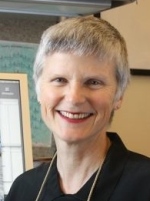2009 was a very full year for me. Over thirty presentations, in locations ranging from Delaware to Wyoming to Ohio to Denver to Tucson to Sweden–and of course Baylor University, where I did many presentations and facilitated many others in my role as Director of the Academy for Teaching and Learning. A new role with the New Media Consortium as a member of its Board of Directors. A trip to Barcelona to participate in the Open EdTech 2009 conference. The blog was quieter than I’d like it to be (I have a lot of back-blogging to do), but elsewhere the cycle of presentations kept me at the keyboard for a great deal of writing. I presented again in Second Life, a keynote address for the NMC’s fall symposium, and held two classes there. In the first part of 2009, the ATL welcomed Hillary Blakeley as its first Graduate Fellow, and about the same time we got our first office manager, Melissa Bilbro. In the fall term, we welcomed Ashley Palmer-Boyes as our second ATL Graduate Fellow, and we began our first Faculty Fellows program. Summer 2009 was my first time administering and participating in the Baylor Summer Faculty Institute, the flagship faculty development program on our campus. I also had my first opportunity to collaborate with Baylor’s Electronic Library and Central Libraries in the Educational Technology Showcase.
While all this was going on, I also taught my first two classes at Baylor, both of them First Year Seminars entitled “From Memex to YouTube: An Introduction to New Media Studies.” One student in the spring got his work featured in a showcase on the Doug Engelbart Institute web page. A student in the fall term will present with me and with Baylor E-Learning Librarian Ellen Filgo at the 2010 annual meeting of the EDUCAUSE Learning Initiative. Along the way I also wrote a short essay for EDUCAUSE Review, collaborated on another essay with my fellow ELI Advisory Board members, and contributed to an ELI white paper on Learning Environments.
And there was much more besides, far too much to itemize here.
By the end, I was ready for the holiday break, but I hadn’t counted on “break” becoming literal–I slipped on black ice while walking the dog outside a motel in Salem, Virginia, and broke my ankle. It was a relatively minor break, and I’m pretty much off crutches, but it does hurt a bit … well, rather much at times, but nothing unbearable. All hail my wife Alice, who did all the driving on the way back and got us here safe and sound to ring in the New Year.
Yesterday we stopped at Chris Bell’s grave in Bartlett, Tennessee, to pay our respects to the founder and visionary behind Big Star.

This afternoon my son and I watched Blade Runner together. Ian’s a budding filmmaker and he wanted to see what all the BR fuss was about. Now he knows. Tonight the family played its way through the Beatles Rock Band game. The credit sequence took forever, but I was so intent on hearing all the studio chatter that I sat through it all. The game designers know how to please the Beatles geeks, without a doubt. Our reward for our patience with the IP scroll was an encore performance of “The End.” Then we found out we’d unlocked the 1963 Beatles Christmas record. We’ve long known those records at our house, but it was a pleasant surprise to find the 1963 record among the treasures in the game.
A good way to begin 2010.






